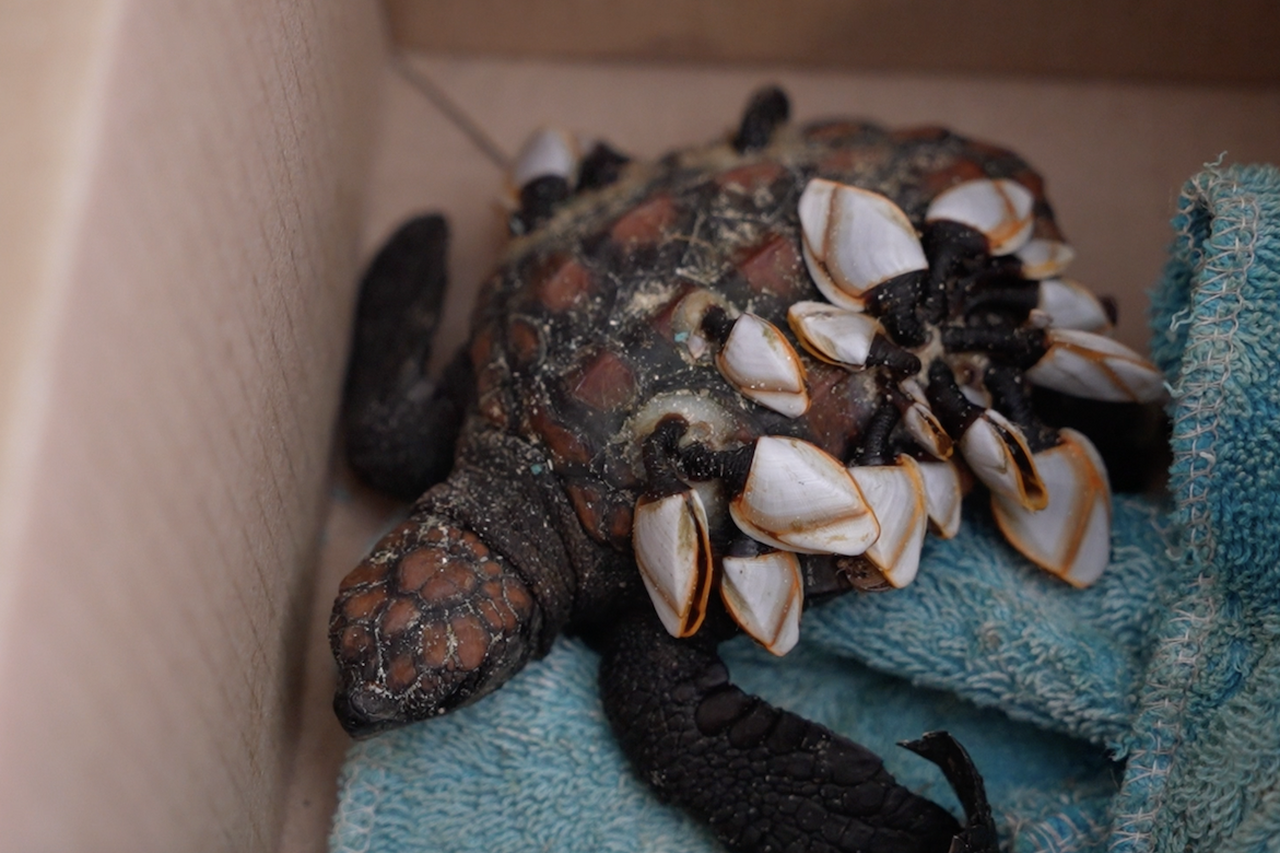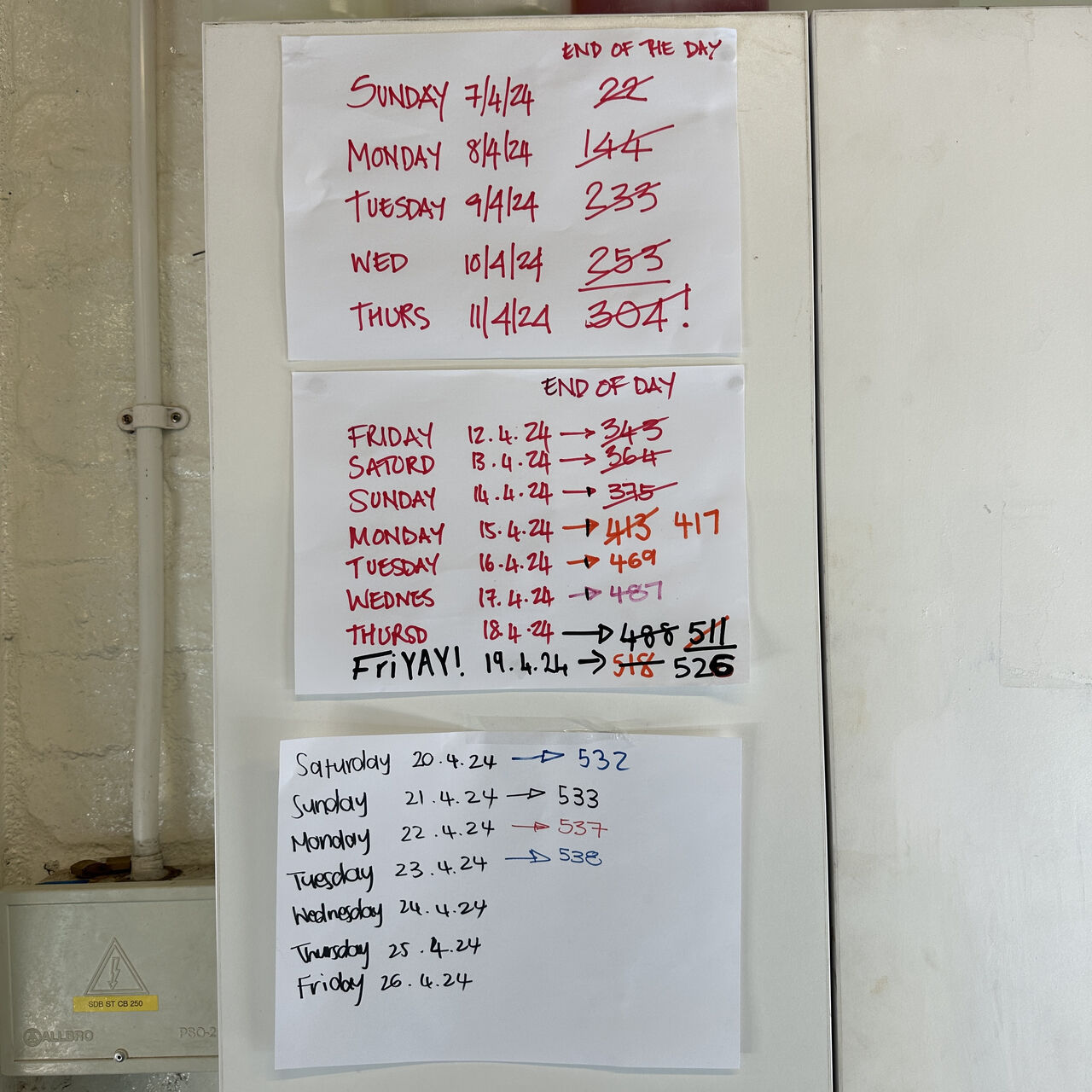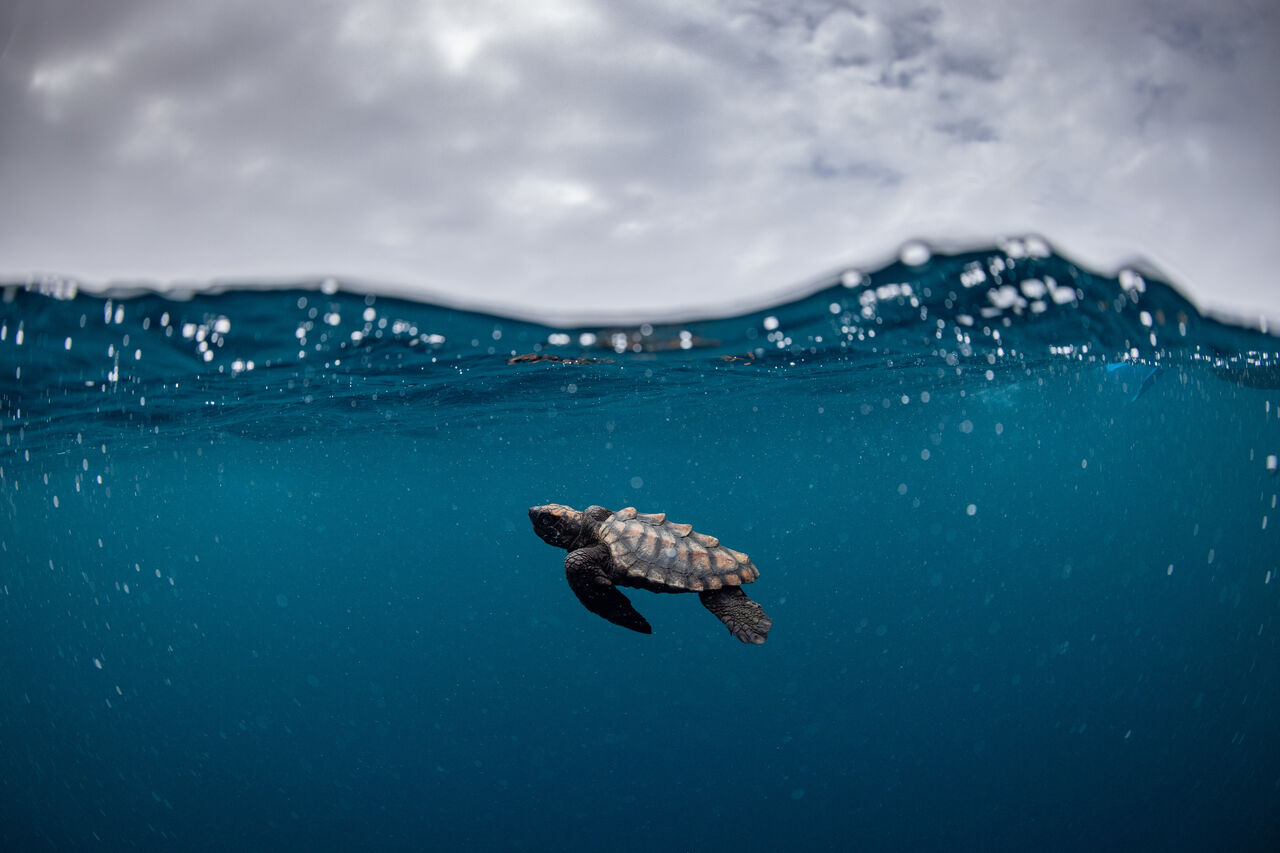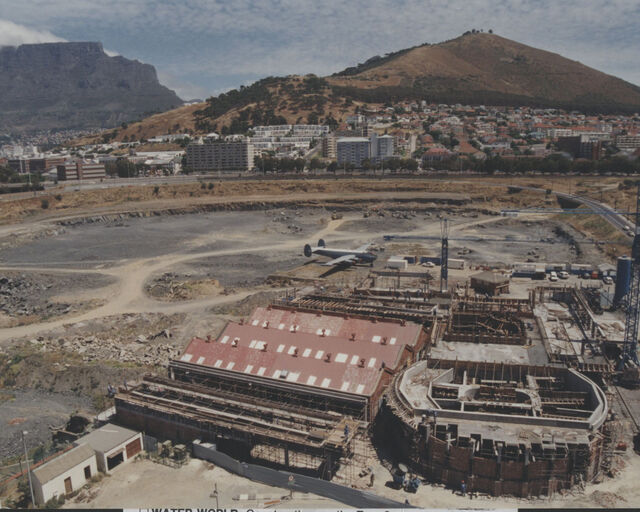Our Turtle Conservation Centre received over 570 stranded turtle hatchlings, and we need your help!
Over the last few weeks, the Two Oceans Aquarium Foundation’s Turtle Conservation Centre has been inundated with stranded turtle hatchlings. Victims of the recent inclement weather across the Western Cape, these hatchlings are emaciated, injured, and in dire need of care and treatment.
Our Turtle Conservation Centre's Turtle Rescue Network has rescued a whopping 574 turtle hatchlings to date - we need your support!
The hatchlings’ journey so far…
From the moment they hatch along the northern KwaZulu Natal coast, loggerhead turtles must fight to survive. Emerging from their nests deep beneath the sand’s surface, these tiny animals (about the size of a matchbox) begin to crawl towards the sea. This path is fraught with danger – seabirds, crabs, and even dogs enjoy a free-for-all, eating all the hatchlings they can. Once the lucky survivors have reached the sea, they enter a 48-hour swimming frenzy – they swim without stopping or eating for two days, covering as much distance as possible to reach the warm Agulhas Current.
The hatchlings are not out of the woods even if they survive these first battles. As the Agulhas Current sweeps the hatchlings south, many of them are spat out into the colder waters of the Western Cape, where the current turns. Typically, the shock of the colder water is enough to result in many of the weaker hatchlings stranding. However, the rough seas, intense winds, and driving rain over recent weeks in the Western Cape have brought in waves of stranded turtle hatchlings – far exceeding the numbers that our Turtle Conservation Centre expects for this time of year.
Weighing anything between 30g and 100g, these hatchlings are powerless to stop themselves from becoming swept up in the rough seas and stranding along the beaches of the Western Cape. In recent weeks, hundreds have been found by the incredible, dedicated members of our Turtle Rescue Network. Our previous record for the number of hatchlings stranded in a season was 250 – with 574 hatchlings rescued (and counting), it’s fair to say that the previous record has been shattered!
Upon arrival at the Turtle Conservation Centre, the stranded hatchlings are cold, weak, and injured, some with partial or full amputations. Many are covered in goose and volcano barnacles. The volume of barnacles on a hatchling is a useful health indicator – as barnacles move slowly, it is a sign of how weak and immobile a hatchling had to be for the barnacle to thrive and grow on its shell.
When our Turtle Conservation Centre first got wind of the hundreds of hatchlings headed our way, it took a huge team effort to pull together and make sure that we were ready to receive, treat, house, feed, rehabilitate, and ultimately release each of these turtles.
On Sunday, 7 April, we had 22 turtle hatchlings. By the end of Monday, 8 April, we had 144. On Sunday, 14 April, our numbers had skyrocketed to 375. Our latest numbers show that the Turtle Conservation Centre’s Turtle Rescue Network has rescued 574 turtle hatchlings.
What does rehabilitation at the Turtle Conservation Centre entail?
Let’s look at what goes into rehabilitating a single turtle hatchling. This encompasses everything that goes into readying the turtle for release back into the ocean, from feeding programmes and cleaning schedules to monitoring their plastic egestion. Rehabilitation typically takes around 4 – 12 months.
The hatchling’s meals initially consist of small amounts of protein, like white mussels. This is to stir their appetites and encourage them to pass faeces. Once the hatchling has passed faeces (and it has been checked for microplastics), the team introduces gel food, which is the perfect mix of protein, vegetables, and vitamins!
Once a week, the hatchling is weighed and measured to ensure they are growing well. Our turtle vets also do a weekly health round where they will assess the hatchling’s health. This check-up includes everything from checking that their shell is hardening and if the turtle is exhibiting natural behaviours to doing blood work and x-rays! Patient-specific issues, like wound treatment, antibiotics, and pain medication will be addressed during this time.
Rehabilitation also includes routine jobs, such as siphoning and sterilising the turtle’s holding pool to clean up its mess. Another routine, but distressing, job is collecting the pieces of plastic passed by the hatchling. While many of the hatchlings pass these microplastics without irreparable damage to their digestive systems, some are not so fortunate.
Now, imagine having to do this for hundreds of turtle hatchlings.
Rehabilitating over 500 hatchlings is a job of profound weight – not only is our turtle team caring for individual animals’ lives, but they are also contributing to the future survival of turtle species by successfully rehabilitating and releasing these turtles.
How can you help?
Rehabilitating just one hatchling costs roughly R10 000 – no small ask. Yet, this contribution keeps the little patient alive: From feeding it a healthy diet, keeping it warm in clean saltwater, and maintaining life support to veterinary treatment for injuries and illnesses. Eventually, this contribution will take the little turtle all the way home – when it has regained its strength and is ready to greet the big blue once more, our team releases this hatchling to its ocean home.
Each hatchling requires intensive care and love. We need all the help that you are kind enough to offer: R50 would buy enough vegetables for a week of gel food. R500 covers a week of veterinary care and food. R1 000 covers two weeks of veterinary care and food. R2 000 will help a hatchling gain enough strength to move from our intensive care unit to the rehabilitation space. R5 000 will allow the hatchling to double in size and strength, getting closer than ever to release in summer. R10 000 completely covers the care of a turtle from rescue through rehabilitation to release!
We are hoping to raise R2.4 million to get the 574 hatchlings back on their flippers. At the Turtle Conservation Centre, we are devoted to upping the odds for these tiny turtles and making a dent in survival rates – we are committed to a future where all species of sea turtles swim wild and free in the ocean where they belong. Please help us to help these resilient, precious animals.
Related News
Sign up to our Newsletter
Receive monthly news, online courses and conservation programmes.







